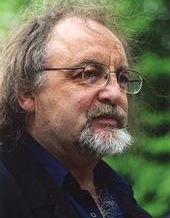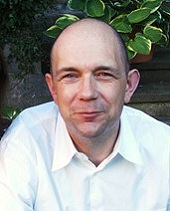Our regular listen to and look at living, breathing composers and performers that you may not know yet, but I know you should… And can, right here and now, with so much good listening online:
Mayke Nas (b. 1972 — Netherlands)
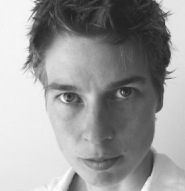 Mayke studied piano and composition with Martijn Padding, Gilius van Bergeijk, Daan Manneke, Alexandre Hrisanide and Bart van de Roer at the conservatories of Amsterdam, Tilburg and The Hague. In 2004-2006 she was composer-in-residence with the Nieuw Ensemble. During the summer of 2005 she spent three months as artist-in-residence in Aldeburgh, England supported by a scholarship from Arts Council England, and in 2003 and 2006 she took part in the European interdisciplinairy workshop ‘Ziel 1 = Kunst’ in Oslip, Austria as representative of the Netherlands. Visit the link above and you’ll know exactly why Thea Derks wrote:
Mayke studied piano and composition with Martijn Padding, Gilius van Bergeijk, Daan Manneke, Alexandre Hrisanide and Bart van de Roer at the conservatories of Amsterdam, Tilburg and The Hague. In 2004-2006 she was composer-in-residence with the Nieuw Ensemble. During the summer of 2005 she spent three months as artist-in-residence in Aldeburgh, England supported by a scholarship from Arts Council England, and in 2003 and 2006 she took part in the European interdisciplinairy workshop ‘Ziel 1 = Kunst’ in Oslip, Austria as representative of the Netherlands. Visit the link above and you’ll know exactly why Thea Derks wrote:
“[Nas’] music titters on the edge of sound and noise, but now and then puts a firm fist on the table as well; often there’s a comical side to it. Mayke Nas doesn’t like over-seriousness, but playfulness and ambiguity. She explores the bounderies of music with fearless energy and imagination, that also characterizes her personality. Instead of a biography, she sends two scores, a cd-rom and a link to her weblog. On it we find thoughts and reflections like ‘A puzzle of which half of the pieces are missing: that is a real puzzle’, and ‘Sturgeon’s law: 90% of everything is crap’. By ways of illustration she sends ten pictures of her hands counting to ten on the keys of the piano, along with the same amount of reasons to compose.”
For me, Mayke’s work is chock-full of wonderfully clever ideas, but realized in ways that go beyond making simply “clever” music; that’s a fairly rare combination. A number of the MP3s at the site are only excerpts, but poke around and you’ll find some complete things to hear (and see) as well.
David Coll (b.1980 — US)
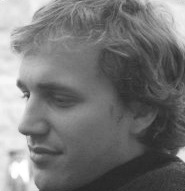 David’s recently been dropping by to comment, both at S21 and NewMusicBox (howdy, David! Y’all come back’n set a spell, hear?…). But since he’s new enough to not be one of our “regulars”, I thought I’d introduce you to his excellent work — by turns dark, contemplative, moody and even violently voluptuous. The link above will take you to his website/blog, which includes a number of complete MP3s (and a couple M4a’s for you iTunes folk). For a little info, I’ll let him tell it:
David’s recently been dropping by to comment, both at S21 and NewMusicBox (howdy, David! Y’all come back’n set a spell, hear?…). But since he’s new enough to not be one of our “regulars”, I thought I’d introduce you to his excellent work — by turns dark, contemplative, moody and even violently voluptuous. The link above will take you to his website/blog, which includes a number of complete MP3s (and a couple M4a’s for you iTunes folk). For a little info, I’ll let him tell it:
“The music of David Coll reflects an interest in the energy, range and character inherent in the sounds of instruments, while questioning their conventions of performance. His compositions exhibit extended instrumental techniques and both open-ended and highly-specified notation. After completing undergraduate studies at the University of Illinois, David obtained a M.A. at the University of California-Berkeley. Before continuing on for a PhD he is at IRCAM in the year-long cursus. This coming year he will continue there, working on a second piece.”

 From the Philip Glass Archive – Vol. 2: Orchestral Music dips into Glass’ “world music” bag for Days and Nights in Rocinha, a 23-minute musical tribute to the Brazilian neighborhood that is home to the world-famous “samba school” and a place that Glass’ frequented often in the 1980’s and 1990’s. The piece was premiered in 1998 as a Dance for Dennis Russell Davies and Orchestra by the Vienna Radio Symphony Orchestra. It’s an engaging piece that demonstrates once again that Glass coasting is better than most composers trying their damnedest.
From the Philip Glass Archive – Vol. 2: Orchestral Music dips into Glass’ “world music” bag for Days and Nights in Rocinha, a 23-minute musical tribute to the Brazilian neighborhood that is home to the world-famous “samba school” and a place that Glass’ frequented often in the 1980’s and 1990’s. The piece was premiered in 1998 as a Dance for Dennis Russell Davies and Orchestra by the Vienna Radio Symphony Orchestra. It’s an engaging piece that demonstrates once again that Glass coasting is better than most composers trying their damnedest.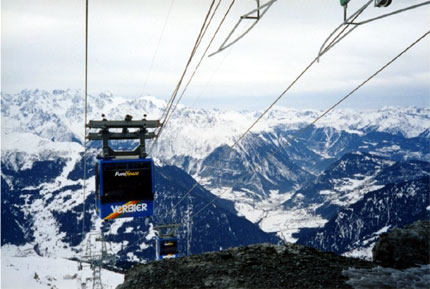 I don’t ski. Asthma. And fear. Mostly fear.
I don’t ski. Asthma. And fear. Mostly fear.